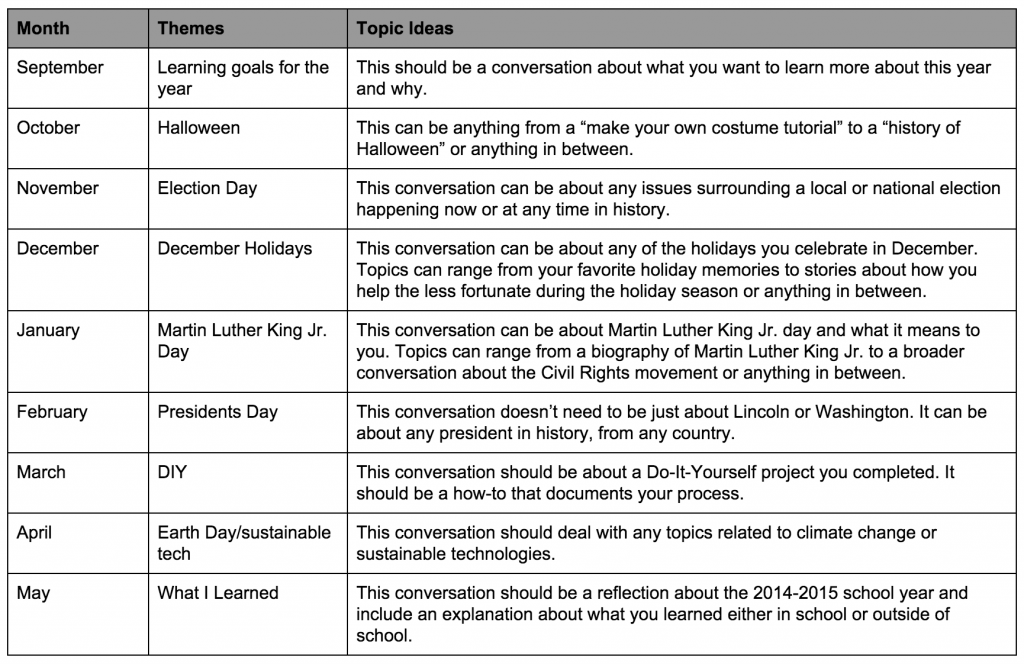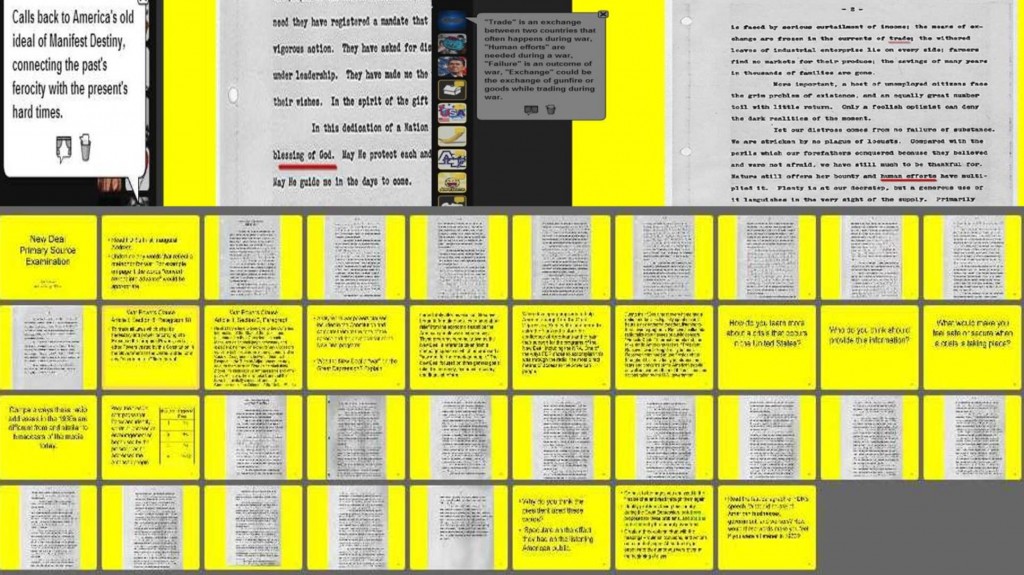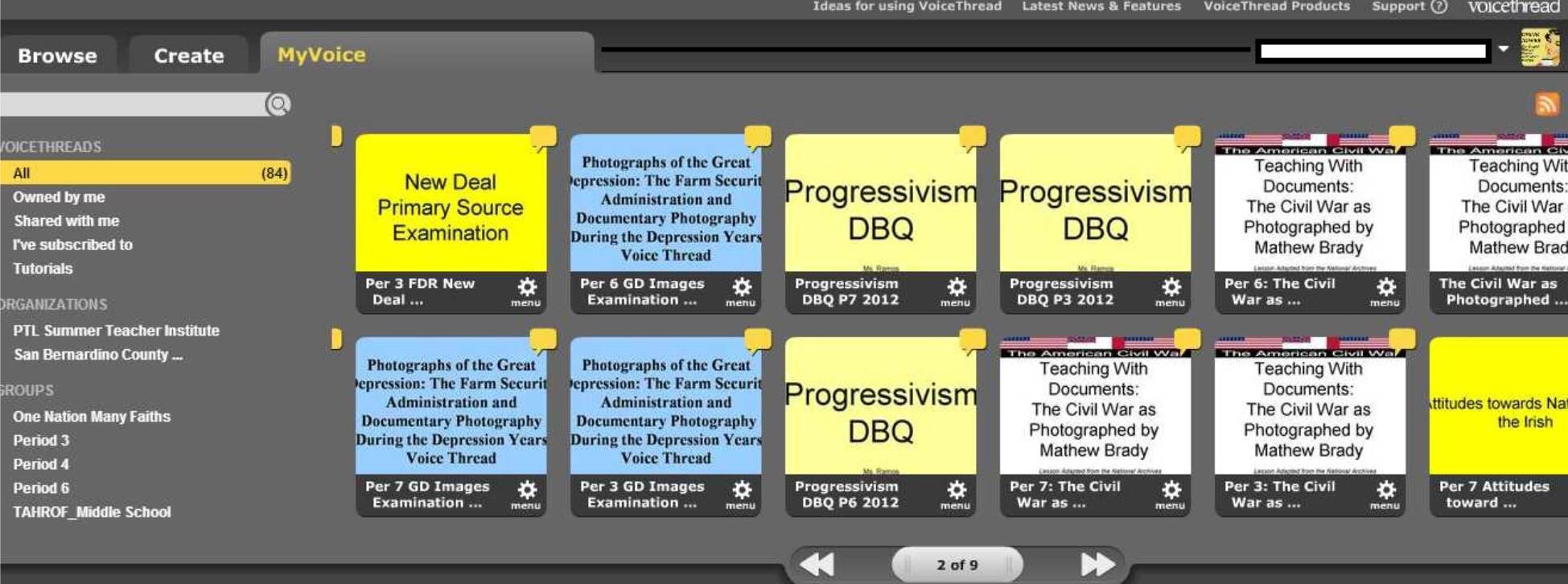The K-12 school year usually starts with a frenzy. Between meeting parents, new teachers and classrooms full of students, time can get away from us pretty fast. It can be easy to put off professional development “until things settle down” but often we find that things never really settle down at all. There’s always a big test or a holiday coming up and educators scramble to find time to enrich their practice.
The good news is that with twitter, your professional development can happen right in the comfort of your living room. Every night of the week there are different groups of educators clustering around hashtags and sharing valuable insights into their practice. With so many different chats it can be hard to decide which one is best for you, so we decided to share some info about the ones we like to join from time to time.
Here are 5 chats you may not know about, but should:
Montana’s EdChat is a vibrant group of educators who talk about broad issues in education. You don’t need to be from Montana to join. Here’s a description from one of the moderators of the chat:
#MTedchat is a statewide Twitter chat developed to strengthen Montana’s network of innovative and connected educators. Great timing and enthusiastic participants from across the region has made our chat a huge success drawing Montana’s highest education leaders and professionals from far beyond our state lines.
Moderators: @cristama and @triscicurious
To learn more about #MTedchat visit their resource hub: https://sites.google.com/site/mtedchat/
So many people are interested in the flipped class model, but they aren’t sure where to start or how to overcome some of the obstacles with this approach. If you’re one of those people, the #flipclass chat is for you. You’ll find a terrific group of educators with experience and ideas to help you flip your class every Monday at 8:00.
Moderators: @guster4lovers and@thomasson_engl
This is a truly global chat, originating from NY author and education speaker Laura Hill and the active, kiwi-mind of New Zealand native turned Singapore educator Craig Kemp. From the moderators:
The goals of #whatisschool are simple, to get educators thinking about the big picture of education as it changes along with a rapidly growing technology sector in order to best educate students for a workforce and jobs that don’t yet exist. Conversations about how technology and methodology are influencing education, setting up a global classroom, bringing your PLN to your students and getting the most out of technology and pedagogy, along with insights from special guest experts have inspired educators to make #whatisschool one of the most talked about chats on Twitter.
Moderators: @mrkempnz and @candylandcaper
Are you excited to introduce STEM ideas into your lessons, but don’t know where to start? This chat might be worth checking out:
Monthly ~~#~~STEMchats bring together parents, educators + STEM professionals to share resources and ideas to raise STEM-loving kids.
Moderator: @kimmoldofsky (note: sign up for the newsletter as dates may vary)
This is a great chat for music educators who are ready to dive into the deep end of the pool. There are so many professionals sharing ideas and connecting, it is truly a pleasure to be part of the action.
From the moderator:
#musedchat happens every Monday night at 8PM Eastern, covering a wide range of music-related topics. It is the most active music ed chat on twitter.
Moderator: @jguarr
We are excited to announce a new way for us to feature your work and the work of your students! Each month for the 2014-2015 school year, we will be accepting submissions for a “VoiceThread of the Month”. Each month, we will ask for an entry based on a different theme along with a link to submit the work when it’s complete.
For September, the theme is: Your Learning Goals for the Year
Here’s how it works:
The submission can be either student or teacher created.
We are looking for conversations, not just presentations.
The VoiceThread will be judged on these 3 criteria:
1. Comment Quality– all comments should add value to the content of conversation.
2. Visuals– all images/documents/videos should be appropriate, interesting, and properly sourced.
3. Comment Quantity– more people engaged in the conversation means more shared points of view.
The winning selection for each month will be added to a special section in our digital library so everyone can see the great work you do.
Themes for the 2014-2015 school year:

This is a guest post by VoiceThread Certified Educator, Dr. Jaime Hannans.
About the same time that I was introduced to VoiceThread, I was finishing PhD courses with my colleague, Dr. Meg Moorman, Clinical Assistant Professor at Indiana University. During our talks, Dr. Moorman educated me about Visual Thinking Strategies (VTS), and I learned how she was applying VTS in her teaching. VTS is a teaching strategy used to engage students with a work of art. Dr. Moorman had been using VTS, with a trained facilitator at an art museum in her area, and found students were using these strategies when caring for patients.
Dr. Moorman conducted a study focused on what meaning VTS had for students exploring how they used VTS in patient care. Guided by a series of 3 questions, a facilitator chose a work of art and asked students the following questions: ‘What is going on in this painting?’ ‘What are you seeing that makes you say that?’ (requiring students to give visual evidence), and ‘What more can you find?’ (requiring them to look again and scaffold off of others’ comments). Students found their observational skills improved and that they were more open to hearing other’s opinions. They found that they were more likely to give detail to back up observations in their clinical situations and listen to others during report. They also found they used the same line of questioning that the facilitator used when they were seeking more information during clinical rotations during patient care.
I was intrigued by the use of VTS and the impact on the students. What a great method of asking students to reflect upon their own knowledge, perspectives, and experiences while using observational skills. For nursing students in particular, became an assignment the collectively brought together ideal teaching-learning moments: addressing observation skills during assessment, memory recall during routine care, self-reflection, and awareness of differences in perspectives, beliefs, cultures, and practices. I wanted to share Dr. Moorman’s – VTS assignment with my students, however, there was not an art museum or trained facilitator in close proximity. This is how VoiceThread became a solution to my problem.

Using VoiceThread, I recreated the VTS assignment. I have engaged my students in an innovative and unique way, connecting the art and science of nursing, so to speak. Students were asked to view five to eight works of art (drawings, paintings, images, etc.) within the VoiceThread, selecting two to post audio/video responses to. The students were asked to reflect upon the artwork, critically evaluate what they observed, describe what they felt, and analyze why.
Overall, students felt the VTS assignment encouraged them to think ‘out of the box’, allowed for learning through perceptions and emotion, and one student stated it reemphasized in nursing to “remember the emotions behind caring for people”. By the end of the assignment, the average rating for the assignment using VoiceThread was 9 on a 0-10 scale with 10 being the most effective. Some students initially were hesitant to use VoiceThread, most related to discomfort with audio/video recording themselves. However, the students who admittedly did not like to record were all willing to participate in a VoiceThread assignment again.

What was most evident using VoiceThread was the students were able to portray their individual perspectives, preferences, and personalize the assignment. Students indicated the use of VoiceThread was more engaging, help them think on the “top of their head”, offered improved absorption of content, and was so much more personal than a text discussion. Students were not required to respond to one another’s postings, but did on their own. Using VoiceThread made the discussion lively, adding to student’s learning by engaging them on an individual level.
Students got creative with the video too! Most students appeared to record from home. Some students recorded their pets or child while they talked, and even one student tried on different wigs for subsequent recordings. They made it fun. Most importantly, the assignment impacted the students beyond the day they posted their responses. Upon returning to class, they discussed the art and the experience of paying attention to the skill of “noticing”, days to weeks after the assignment had ended.
(For more on VTS go to http://www.vtshome.org/ or contact Dr. Meg Moorman at mmmoorma@iu.edu. For additional information contact Dr. Jaime Hannans at Jaime.hannans@csuci.edu.)
About the author: Jaime Hannans, RN, PhD, is Assistant Professor In the Nursing Program. She has been teaching nursing clinical, classroom, and lab courses at CSU Channel Islands since January 2009, with prior experience teaching at Moorpark College Nursing Program since January 2006. She is interested in the future direction of technology in nursing and education. Her research interests are in technology in learning, online education, reflection, student engagement, clinical education, and simulation. You can connect with her on twitter at: @jaimehannans

This is a guest post by Boise State professor, Yu-Hui Ching.
I am an assistant professor of Educational Technology at Boise State University. I have been using VoiceThread for discussions and ice-breaking activities in my online courses for two years. My students and I enjoy VoiceThread because we can see and hear each other, which helps us build a more connected learning community.
In my recently published research article, I tackled a problem that concerns many online instructors – how to guide students to provide quality peer feedback. Peer evaluation is a very useful formative assessment strategy (i.e., soliciting feedback while the course is in session) that has been used extensively in our graduate online courses. In such activities, students will typically share a draft of their assignment, and provide feedback to assist in improving the quality of the work of their peers. Ideally, I would like students to provide constructive feedback, but in reality, without support from the instructor, many students only provide comments at a superficial level, such as, “Great job!” or “I agree with you.” Previous research has found that not all students are capable of providing quality feedback due to various reasons. Some students lack the needed domain knowledge to evaluate the work of their peers, while others feel anxious as they don’t want to appear to be overly critical.
In this research study, role-playing was used as an innovative strategy to help scaffold the process of providing peer feedback. This research was situated in a case study activity where students were asked to analyze a complex case scenario related to the subject matter of Instructional Design. They created an audio/video presentation to showcase their analysis of the case, and shared the presentation with the class. Students were then asked to take on the role of a stakeholder in the case scenario and comment on their peers’ analysis based on the stakeholder’s perspective.

For example, in a case situated in an elementary school setting, many learners chose the associate principal’s role from which to construct their feedback. Students were further guided to address two questions: (1) How does the analysis address your existing (the stakeholder’s) concerns and/or needs? (2) What are some concerns you may have toward the analysis (and the solutions if there are any)? At the end of the activity, students revised their analysis of the case based on peer feedback and then submitted the assignment for a grade.
How did VoiceThread come into play? Because it is very easy to use and it allows multimedia presentation as well as audio/video comments, VoiceThread was selected as the discussion interface for this collaborative activity. Thanks to the audio/video comment sharing function, some students became quite engaged in the role-playing and tried to use different voices to reflect the characters of the role they played.
The research findings revealed potential positive impact of role-playing on learners’ generation of constructive feedback. With the role-playing strategy, students identified more problems in the work of their peers, when compared to those who responded to peers without playing a role. As revealed in my survey results, 60% of learners perceived the role-play strategy as useful in assisting them in composing and providing meaningful feedback. Overall, 90% of learners reported peer feedback useful or somewhat useful. Some students reported that when playing a role, they were able to provide more focused feedback because they only needed to comment from one perspective. In addition, they felt role-playing helped relieve the feeling of criticizing or attacking their peers because they spoke from the role of the stakeholder.

Personally, I think the most interesting finding from my study is that the role-playing strategy alleviated students’ anxiety when critiquing peers’ work. Overcoming affective barriers, students were able to identify problems and concerns in peer analysis, which demonstrates the use of higher-order thinking – critical and evaluative thinking, in particular. Although not reported in this study, students and the instructor also recognized VoiceThread as a user-friendly and versatile virtual interface that empowers learners through meaningful and authentic asynchronous collaborative experiences.
If you are interested in reading more about this research, here is the link to the full-text article: “Exploring the Impact of Role-Playing on Peer Feedback in an Online Case-Based Learning Activity”.
Finally, here is a link to another VoiceThread study: Collaborative learning using VoiceThread in an online graduate course.
Yu-Hui Ching earned a Ph.D. in Instructional Systems and her focus is on Instructional Design, Educational Technology and Learning. You can follow her on twitter at @ChingBSU.
This is a guest-post via VoiceThread by Lori Rusch. She is an Art History instructor and shares her ideas about using VoiceThread below. We’d love your comments either on this blog post or in the actual VoiceThread!


This is a guest post by History teacher and VoiceThread user, Liz Ramos.
Sharing and collaborating with educators on Twitter has been INVALUABLE to me as an educator and my classroom over the past year and a half. I (@historytechie) participate in a variety of educational Twitter chats and have no problem sharing resources and tools that work in my classroom, such as VoiceThread. As a result, I was eduhonored when VoiceThread reached out and asked me to be a guest blogger. I have flipped my World History, AP US History, and AP Government classes over the past three years- while NOT being a 1:1 classroom.
VoiceThread has been a phenomenal tool to get my students annotating and practicing visual literacy. I have shared my experiences with other teachers at county workshops, edcamps, CUE Tech Fair, and California Council for the Social Studies conferences and Classroom Technology Blog…you can say I believe in their product.
My integration of VoiceThread into my classroom arsenal came about when I was struggling to get my students to examine primary sources. They were just NOT getting excited about documents on paper. I had to think…how am I going to “”PIRATE” this lesson? Another issue I had was that I wanted to share the insights some students were making in another period with ALL of my classes. Utilizing VoiceThread for students to record their insights allowed me to share student discussions with other class periods. Then I remembered being introduced to VoiceThread at a Teaching American History workshop.

My students and I went to the computer classroom one day. They were not too excited, because most classes at my site computer lab were research projects. We were changing that mindset! I showed them VoiceThread and their curiosity was piqued. They proceeded to register and begin to use the product. Now students being students, especially in high school, they had fun playing with the writing tool and making comments to other students at first. I was ok with this to get buy in. Boy oh boy did I have buy in from my students. They were working away analyzing documents AND NOT BEMAONING the process…”PIRATE” success. My students are huge fans of the writing tool, audio response, and video comments. Two of their favorite VoiceThreads were examining FDR’s first Inaugural Address as a declaration of war on the economy and Native American Perceptions Through Images.
VoiceThread is great beyond primary source analysis, as I share in presentations for teachers outside of the history classroom. Why not upload an image from your Art, Science or Math curriculum and have students label it? You could also jigsaw the diagram and have different students focus on different components. In Foreign Language or English you could have part of a sentence or story for student to complete or identify the wrong part of speech. VoiceThread is a creative way for a teacher to introduce vocabulary or a scenario and have Foreign Language or English Learners respond orally and practice their speaking fluency.
Here are a few tips from my use of VoiceThread. Beyond their phenomenal image selections, I utilize images from the National Archives quite often. I have found it easy for my students and myself to create a PPT with the images and text. This serves many purposes for me. Class management: I generally pick a bright color as my PPT background. This makes it easy for me to notice on the students’ computer screen and seek out students I need to check up on.
I generally will include a slide or two with instructions and a bit of background for the students. This helps with me not having to repeat myself a million times- you could also have the first response be your written or oral instructions for the students. Don’t be afraid to also place jigsaw instructions in your PPT instructions. If your computers or rows are numbered this will facilitate the process. Let the responses be public at first so they can get a sense of the program. Comment and give feedback on responses and encourage the students to do so as well.

Once they realize this will be public it raises the bar. Then go back and make the responses private. We go back over them the next day and highlight great comments. Don’t just highlight the same students. I found that the quiet students and class joksters would ROCK their responses. Add slide numbers in your PPT- this helps students to pace themselves when you tell them they should be at point x in class. Once you have your “lesson” finished, save your PPT as a JPEG for all slides and then import them into VoiceThread. Lastly, keep your “master” Voicethread clean. Make a copy of the VoiceThread for each class period to make the management easy.
I hope this has been helpful and sparked some ideas! Don’t forget that VoiceThread is also an app that your students can use on their iPads or iPhones.
Liz Ramos is a History and Social Studies teacher at Alta Loma High School in Southern California and Inland Empire Council for the Social Studies Teacher of Excellence.
Summer is a great time to think about classroom design. In this VoiceThread, Cristina Milos (@surreallyno on twitter) counters conventional wisdom about classroom design. She discusses her ideas about the drawbacks of “cute” displays, gender perceptions and much more. Take a minute to watch and add your ideas on this thought-provoking VoiceThread from an incredible international educator:\
This is a guest post by educator and VoiceThread user, Craig Kemp.
My name is Craig Kemp, a kiwi boy living in Singapore. I am Head of ICT & Learning Innovation at an International School here in Singapore. I am proud to classify myself as a globally connected educator. I love twitter and blogging. My guest blog today is based around some practical experience I have had in the classroom utilising VoiceThread as a tool to support student led projects, in particular PBL (problem based learning).
I am a huge fan of PBL and I use it frequently in my classroom. My role has changed over the past few years and now sees me in a mentor/coaching role for staff members across K-8. My role now is to supply teachers with innovative and engaging ideas that are easy to use and actually save the teacher time (the most important factor for any educator). A recent example that I am going to focus on today was working with Grade 3 Students and Staff on a Space related project. Not only did we work incredibly hard to globally connect these students with space related experts from all over the world but we integrated many webtools to support their learning. One of the most powerful being VoiceThread.
After some core teaching, inquiry based learning and student led discussions, students had the opportunity to use their own guiding question to seek and extend their learning. Students used VoiceThread to post their question and send links via social media, to parents, to other classes, and to other staff members to collect their ideas.

One student was investigating how space suits protect human beings while in space. We put her question and link out via social media and in an email to the above mentioned contacts and within 24 hours she was able to check out her VoiceThread wall and collate the 20+ responses to her questions which included links to videos, a voice message from an astronaut, an offer to connect to a space suit company in USA plus much more. In an instant she was hooked. She took her student led project above and beyond expectations thanks to the amazing collaborative tool that is VoiceThread. I look forward to sharing more examples of how I use VoiceThread across my school over the coming months. In particular my use of it in the Mathematics classroom – here is an example of how I used VoiceThread with Year 6 students to assess their knowledge of a Mathematics strategy back in 2011 –http://voicethread.com/?#u298549.b1457021.i7691013 Craig Kemp is the Head of ICT and Learning Innovation at Avondale Grammar School. Stay connected with him via Twitter and his blog.
Sign up for the demo below.
(After registering you will receive a confirmation email containing information about joining the training.)








“According to most studies, people’s number one fear is public speaking. Number two is death. Death is number two. Does that sound right? This means to the average person, if you go to a funeral, you’re better off in the casket than doing the eulogy.”
-Jerry Seinfeld
People hate public speaking because mistakes happen in real-time. We can’t delete something we regret saying to a live audience. All of the factual errors and verbal tics are part of our presentation, like it or not. When your students record their presentations using VoiceThread, they can keep trying until they nail it.

In addition to revising and editing drafts, VoiceThread enables students to record and teachers to assess presentations on their schedule. Live presentations take up valuable class time.
Even when teachers assign group presentations, it might take weeks to complete them all. That means most students are passively consuming information instead of actively learning new concepts. These ideas are core to the rise in popularity of the flipped class, but they apply to every educator in the modern world.
VoiceThread helps us make presentations better and easier at the same time. That’s asynchronous communication and that’s why VoiceThread produces higher quality than real-time tools.












